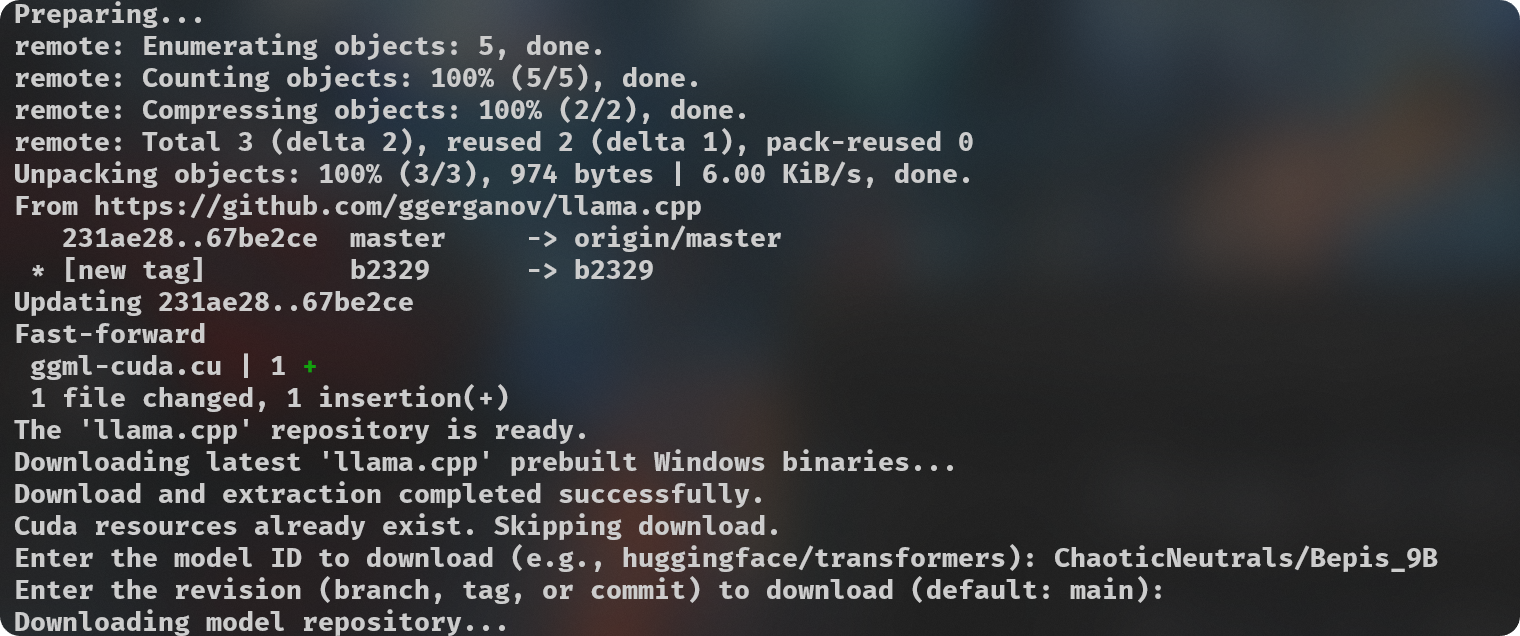license: cc-by-nc-4.0
inference: false
pipeline_tag: text-generation
tags:
- gguf
- quantized
- text-generation-inference
Credits:
Made with love by @Lewdiculous.
If this proves useful for you, feel free to credit and share the repository and authors.
Warning:
Not expected to handle Llama-3 at the moment.
Pull Requests with your own features and improvements to this script are always welcome.
GGUF-IQ-Imatrix-Quantization-Script:
Simple python script (gguf-imat.py) to generate various GGUF-IQ-Imatrix quantizations from a Hugging Face author/model input, for Windows and NVIDIA hardware.
This is setup for a Windows machine with 8GB of VRAM, assuming use with an NVIDIA GPU. If you want to change the -ngl (number of GPU layers) amount, you can do so at line 141. This is only relevant during the --imatrix data generation. If you don't have enough VRAM you can decrease the -ngl amount or set it to 0 to only use your System RAM instead for all layers, this will make the imatrix data generation take longer, so it's a good idea to find the number that gives your own machine the best results.
Your imatrix.txt is expected to be located inside the imatrix folder. I have already included a file that is considered a good starting option, this discussion is where it came from. If you have suggestions or other imatrix data to recommend, please do so.
Adjust quantization_options in line 159.
Models downloaded to be used for quantization are cached at
C:\Users\{{User}}\.cache\huggingface\hub. You can delete these files manually as needed after you're done with your quantizations, you can do it directly from your Terminal if you prefer with thermdir "C:\Users\{{User}}\.cache\huggingface\hub"command. You can put it into another script or alias it to a convenient command if you prefer.
Hardware:
- NVIDIA GPU with 8GB of VRAM.
- 32GB of system RAM.
Software Requirements:
- Git
- Python 3.11
pip install huggingface_hub
Usage:
python .\gguf-imat.py
Quantizations will be output into the created models\{model-name}-GGUF folder.
